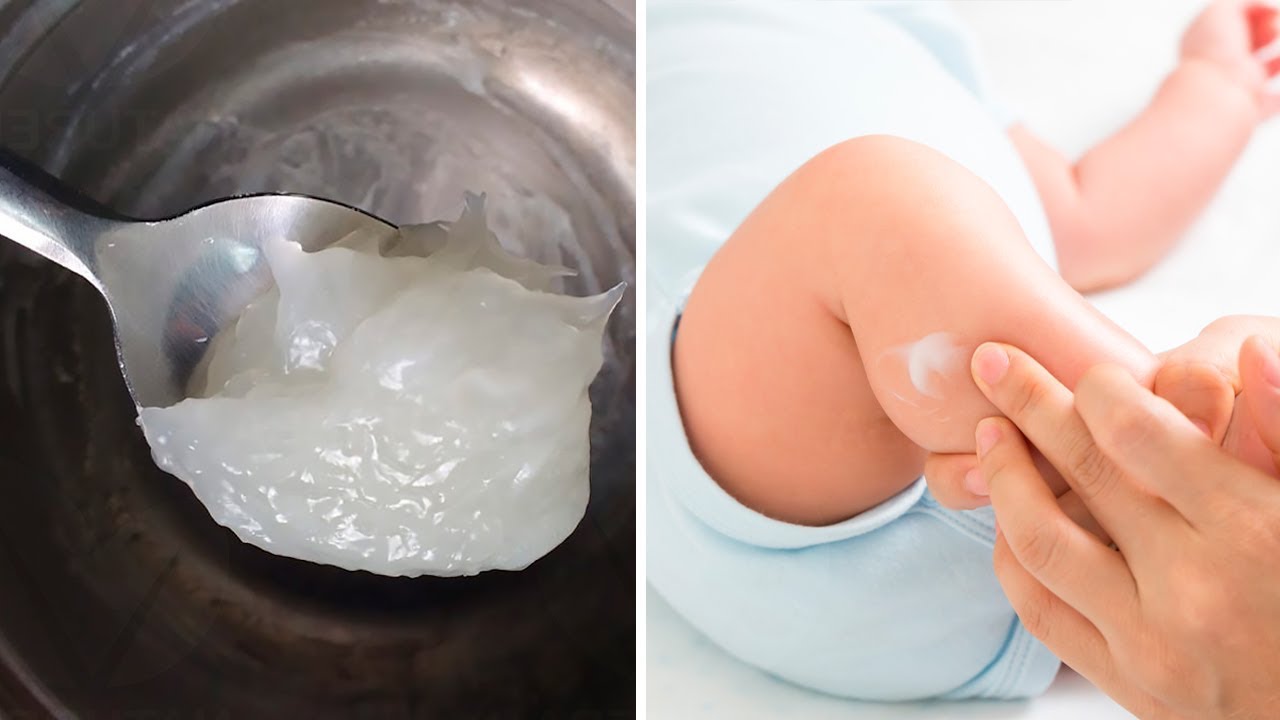How to Make Your Own Anti-Chafing Cream With Only 2 Ingredients
It hasn’t been long since people found out that some anti-chafing ointments can be used to lighten dark circles and dark spots on the skin, like spots on the knees, elbows, and armpits. Did you know this trick?
And since then the use of anti-chafings has been more common, even in houses without any babies.
Thinking about that, and also for the families with children, we decided to publish today a recipe for a homemade anti-chafing ointment.
To take care of rashes in babies, the parents must, first, identify if the baby has a rash.
To do that, check if the skin in contact with the diaper, like the thighs, genitals, and buttocks, is red, hot, or if it has bumps.
If it looks like that, your baby has a diaper rash, and it can bother the child, causing them to cry or feel itchy. In chubbier babies, rashes can also appear on the neck, chin, and arms.
Learn now how to make a homemade ointment with coconut oil and cornstarch to treat chafing and rashes.
Write down the ingredients
5 tablespoons extra virgin coconut oil;
3 tablespoons cornstarch;
Combine both ingredients in a clean glass container and mix with a spoon until smooth. Once it reaches a pomade-like consistency, store it in a clean and closed container. And your anti-chafing ointment is ready!
The cornstarch alleviates the stinging and facilitates healing. According to the pediatric dermatologist Ana Elisa Kiszewski Bau, cornstarch can be used as a drying agent and also as a barrier, when applied over the ointment.
The coconut oil, thanks to its antibacterial and antifungal powers, acts on the inflammations and also moisturizes the skin.
Attention: talk to a trusted pediatrician before using this ointment. The natural products used in its composition may cause an unexpected reaction in some people. It is rare but it can happen.
—————————————-
Facebook: https://bit.ly/38BWbw3
Pinterest: https://bit.ly/2Irvwa6
Disclaimer: The materials and the information contained on Natural Cures channel are provided for general and educational purposes only and do not constitute any legal, medical or other professional advice on any subject matter. These statements have not been evaluated by the FDA and are not intended to diagnose, treat or cure any disease. Always seek the advice of your physician or other qualified health provider prior to starting any new diet or treatment and with any questions you may have regarding a medical condition. If you have or suspect that you have a medical problem, promptly contact your health care provider.



![[ID: Hx_A0iLhdr8] Youtube Automatic](https://bizimtube.com/wp-content/uploads/2021/03/id-hxa0ilhdr8-youtube-automatic-236x133.jpg)
![[ID: lp7w0UmpuIs] Youtube Automatic](https://bizimtube.com/wp-content/uploads/2021/03/id-lp7w0umpuis-youtube-automatic-236x133.jpg)
![[ID: s2-7T1TH-lY] Youtube Automatic](https://bizimtube.com/wp-content/uploads/2021/03/id-s2-7t1th-ly-youtube-automatic-236x133.jpg)
![[ID: b_lakC9M4UQ] Youtube Automatic](https://bizimtube.com/wp-content/uploads/2021/03/id-blakc9m4uq-youtube-automatic-236x133.jpg)
![[ID: r44yl6nPONs] Youtube Automatic](https://bizimtube.com/wp-content/uploads/2021/03/id-r44yl6npons-youtube-automatic-236x133.jpg)
![[ID: pAwto1YQjA8] Youtube Automatic](https://bizimtube.com/wp-content/uploads/2021/03/id-pawto1yqja8-youtube-automatic-236x133.jpg)
![[ID: XETG8azHiv4] Youtube Automatic](https://bizimtube.com/wp-content/uploads/2021/03/id-xetg8azhiv4-youtube-automatic-236x133.jpg)
![[ID: f3G_-S_2HUk] Youtube Automatic](https://bizimtube.com/wp-content/uploads/2021/03/id-f3g-s2huk-youtube-automatic-236x133.jpg)
![[ID: G8oWns54snA] Youtube Automatic](https://bizimtube.com/wp-content/uploads/2021/03/id-g8owns54sna-youtube-automatic-236x133.jpg)
![[ID: s0lIFXhu6aw] Youtube Automatic](https://bizimtube.com/wp-content/uploads/2021/03/id-s0lifxhu6aw-youtube-automatic-236x133.jpg)
![[ID: 4UTd2Ev8eYg] Youtube Automatic](https://bizimtube.com/wp-content/uploads/2021/03/id-4utd2ev8eyg-youtube-automatic-236x133.jpg)
![[ID: RKBGBjVJBxQ] Youtube Automatic](https://bizimtube.com/wp-content/uploads/2021/03/id-rkbgbjvjbxq-youtube-automatic-236x133.jpg)